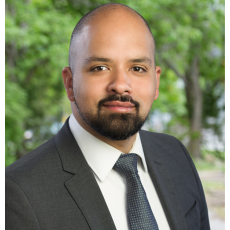Where is CVW located between the oil and the mining industry?
CVW CleanTech’s technologies has been developed to reprocess waste from the major mining oil sands operations in Canada. The process is relatively straightforward as we take all the froth treatment tailings, and recover additional oil and naphtha, thus reducing fugitive methane emissions and reducing GHG emissions by 5% to 10% per site. As a result, about 300,000 to 500,000 tons of CO2 emissions are eliminated, and valuable minerals, like zircon and titanium, are recovered. If we were to deploy this technology across all the six oil sands operations, the recovered minerals would account for 8% of the world’s titanium production, and 6% of the world’s zircon production. Besides the economic advantages, our technology is vital in reducing emissions from the biggest emitters in the industrial sector.
What makes your technology special?
In 2008, when we approached the oil sands industry, the focus was on recovering minerals, but we realized the value proposition could also extend to the environmental side, specifically around tailings management and emissions. The key benefit of our technology is that it can recover the last bits of hydrocarbons and also the minerals which are usually associated with the hydrocarbons in tailings. This approach is more efficient by focusing on fresh tailings, as in the old tailings, the emissions have already been released into the atmosphere. Once we deploy our process, our waste product no longer needs to go into a tailings pond, and it can be directed to a dedicated disposal site where it is progressively remediated.
In simple terms, what are tailings and how negative is their overall environmental impact?
The waste that results from a mining process is known as tailings. After digging up the ore, a series of operations are used to recover bitumen including using a solvent which leaves behind waste that contains residual solvent and bitumen that is then disposed in a tailings pond which continues to expand over the years, hence creating an environmental liability. The emissions are created when the solvent that is used to remove the bitumen flows into the tailings pond, where methane is released through anaerobic digestion. Tailings are the largest risk factor for the mining industry from an environmental point of view, and if there is a dam failure, due to the volume of waste amassed, hundreds of square kilometers of land can be irreparably damaged.

Oil sands operators are by the far the largest emitters of CO2 in Canada, and they account for over 10% of the country's emissions.
Given these environmental liabilities, is the oil sands industry still necessary going forward even though we did not solve the tailings problem?
The oil sands industry is highly important, and it contributes around 17% to Alberta’s GDP. The green transition is not like turning off a switch, we cannot move from hydrocarbon processing to electric energy overnight, especially when we do not yet have in place transmission lines, distribution protocols, and charging stations. In order to complete this multi-decade transition, we must use technology to decarbonize what we can, as fast as we can. We do not claim that our technology is a silver bullet that gets us to net zero by tomorrow, but in a pragmatic world, we need to take incremental steps to succeed, and we certainly can contribute to taking those steps in the near term.
How do you perceive the regulatory environment in terms of governmental support for your technology?
We have received over $80 million in grants to date from the government, and we have had a whole host of agency support from the likes of SCTC, ERA and Natural Resources Canada. Now that we are looking to commercialize the technology, we believe that there will be funding available, given that Canada has various plans in place. The strategic innovation fund helps large industries reduce their emissions through technology, and the Canada growth fund is looking at a variety of mechanisms including guaranteeing carbon pricing into the future, in the context where the current federal government put in place a carbon tax regime that will reach $170 a ton by the end of the decade.
Considering the worldwide workforce crisis, what is the situation like in the oil sands sector?
We have a technical team of individuals with experience in the field, but we see a large challenge on the talent side when we speak with oil sands operators about creating a team of skilled workers who can work on the facility. We would need 60 to 75 people per site, and currently it is extremely difficult to find such a workforce in Alberta, although the jobs are attractive from a financial standpoint. These labor shortages drive up costs for many projects, and any effort to train a new talent pool needs to be massively supported by the political side. Luckily, Canada is now focused on sustainable jobs, and the regulators have come up with an act that would find solutions to attracting more workers.
What has been slowing down the adoption of your technology compared to what it will be in five years' time?
Given there are only six large oil sands mines, our customer base consists of three main companies: Imperial Oil, Suncor and Canadian Natural Resources Ltd. With the rise of the ESG movement, oil & gas companies trade at much lower multiples than in the past, so they have been reticent to spend money on capital projects. They are focused on returning as much cash to shareholders as possible and this has been a cause of concern that the federal government has tried to address. We feel the industry needs a stronger financial commitment to improve their environmental stewardship of assets, and it is also important that various levels of governments understand what our project can deliver. We also hope that indigenous groups in the area that are directly affected by these operations can become our partners and hopefully create more awareness of our project, so that it becomes harder for oil sands operators to stick to the status quo.






